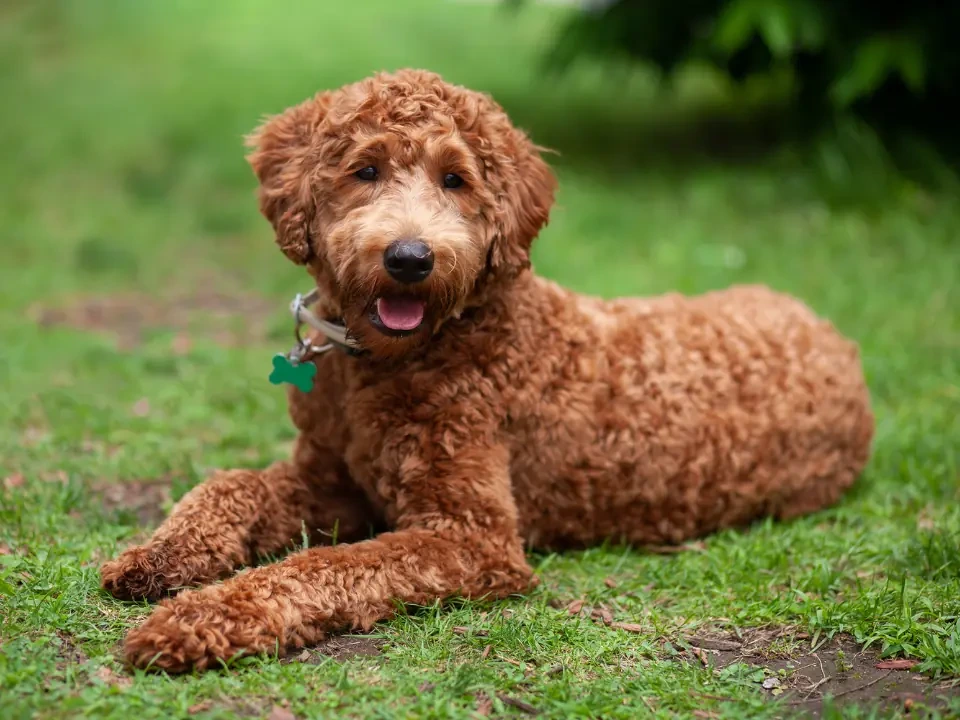Labradoodles, with their curly coats and lovable personalities, have become increasingly popular over the years. One of the key reasons for their rise in popularity is the claim that Labradoodles are hypoallergenic, making them a suitable choice for people with allergies. But are Labradoodles truly hypoallergenic, and what does that term really mean? In this guide, we'll explore whether Labradoodles are hypoallergenic, what causes dog allergies, and how to manage allergies if you’re a Labradoodle owner or considering adopting one.
What Does Hypoallergenic Mean?
The term "hypoallergenic" refers to something that is less likely to cause an allergic reaction, but it doesn't mean that it is completely allergy-free. In the context of dogs, a hypoallergenic dog breed is one that produces fewer allergens than other breeds, making them a better option for individuals who suffer from dog allergies. However, no dog breed is 100% hypoallergenic.
What Causes Dog Allergies?
Dog allergies are primarily caused by proteins found in a dog's dander (dead skin flakes), saliva, and urine, not the fur itself, as many people believe. These allergens can become airborne and easily spread throughout the home, sticking to furniture, carpets, and clothing. When someone who is allergic to dogs inhales or comes into contact with these allergens, it can trigger symptoms such as sneezing, itchy eyes, congestion, and in more severe cases, asthma attacks.
Why Labradoodles Are Considered Hypoallergenic
Labradoodles are a crossbreed between a Labrador Retriever and a Poodle. The Poodle side of the mix is what gives Labradoodles their reputation as a hypoallergenic breed. Poodles have a curly, non-shedding coat that traps dander rather than letting it float around the house, which can help reduce the spread of allergens.
Because Labradoodles often inherit the Poodle's coat, many people assume they are hypoallergenic. However, since Labradoodles are a mixed breed, their coat can vary. Some Labradoodles may have more of a Poodle-like coat, while others might take after the Labrador side, which sheds more and spreads more dander.
Are Labradoodles Truly Hypoallergenic?
The answer is: it depends. Labradoodles can be hypoallergenic for some individuals, but not for everyone. Their hypoallergenic qualities depend on the type of coat they inherit, how much dander they produce, and an individual's specific sensitivity to dog allergens.
Labradoodle Coat Types and Allergen Levels
There are three main coat types that Labradoodles can have:
-
Wool Coat (Curly): This coat type is the most similar to that of a Poodle. It is dense, curly, and non-shedding. Labradoodles with this coat type are more likely to be hypoallergenic because the curls help trap dander, reducing the number of allergens in the environment.
-
Fleece Coat (Wavy): The fleece coat is soft and wavy, falling somewhere between the Poodle and Labrador coat. This coat type sheds less than a Labrador’s, but more than a Poodle’s, meaning it may still produce fewer allergens than other dog breeds. However, it’s not guaranteed to be hypoallergenic.
-
Hair Coat (Straight): Labradoodles with a hair coat are more like Labrador Retrievers. This coat type sheds more and is less likely to be hypoallergenic, as the shedding can spread dander throughout your home.
If you're specifically looking for a hypoallergenic Labradoodle, you may want to choose one with a wool coat, as it is more likely to reduce allergen exposure.
Tips for Managing Allergies with a Labradoodle
Even if you bring home a Labradoodle with a wool or fleece coat, it’s important to note that you may still experience mild allergic reactions, especially if you are highly sensitive to allergens. However, there are several ways to reduce allergens in your home and manage symptoms:
-
Regular Grooming: Keeping your Labradoodle well-groomed is key to minimizing allergens. Regular brushing (preferably outside) will help remove loose dander, and regular baths can keep their coat clean and free of allergens.
-
Vacuum Frequently: Allergens can settle into carpets, furniture, and other surfaces. Vacuuming regularly, particularly with a vacuum that has a HEPA filter, can help reduce dander and dog hair in your home.
-
Use Air Purifiers: Installing air purifiers with HEPA filters in your home can help trap airborne dander and reduce allergen levels, making your living space more comfortable for allergy sufferers.
-
Create Dog-Free Zones: Consider designating certain areas of your home, like bedrooms, as dog-free zones to minimize your exposure to allergens.
-
Wash Bedding and Soft Surfaces: Wash your dog’s bedding and any blankets or soft surfaces they frequent regularly to remove dander. You may also want to wash your own bedding more frequently if your dog likes to sleep near or on your bed.
-
Consult with a Doctor: If you have moderate to severe dog allergies, it’s a good idea to speak with an allergist or doctor before getting a Labradoodle. They can provide advice on managing allergies and may recommend allergy treatments or medications to help control symptoms.
Conclusion: Are Labradoodles the Right Choice for Allergy Sufferers?
Labradoodles are often marketed as hypoallergenic dogs, but the truth is, no dog breed is completely hypoallergenic. Labradoodles with a wool coat are more likely to be hypoallergenic, but even they can produce allergens. If you're looking for a dog that is less likely to trigger allergies, Labradoodles, especially those with Poodle-like coats, can be a good option, but it’s important to remember that individual sensitivity to dog allergens varies.
If you suffer from mild dog allergies, taking steps to minimize dander in your home, such as regular grooming, vacuuming, and using air purifiers, can make a significant difference. For those with severe allergies, it’s essential to consult with a healthcare professional to determine if a Labradoodle or any dog is the right choice for you.
In the end, Labradoodles may not be a perfect solution for all allergy sufferers, but with proper care and maintenance, they can be a manageable and loving companion for many families.


